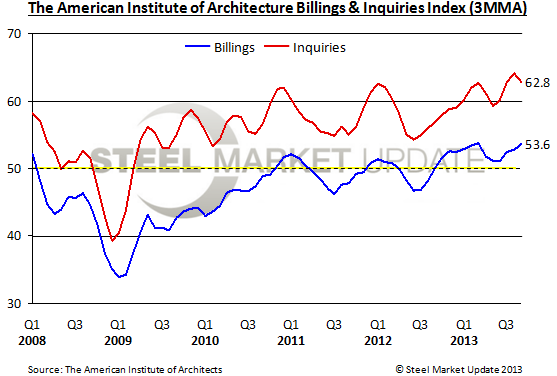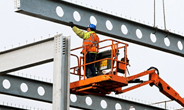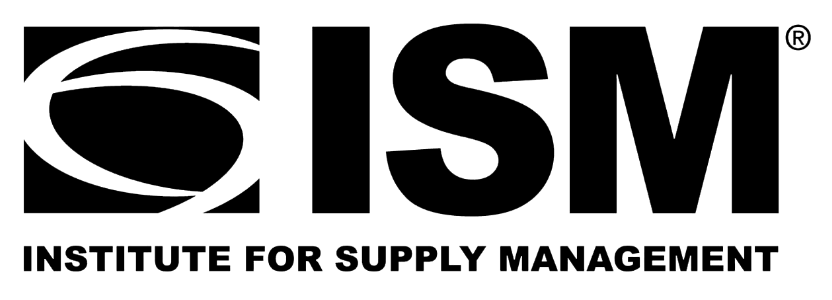Economy

Architecture Billings Index Surges Higher
Written by Brett Linton
October 23, 2013
The Architecture Billings Index (ABI) increased yet again for September, reaching its second highest level in 2013, just behind February. As a leading economic indicator of construction activity, the ABI reflects the approximate nine to twelve month lead time between architecture billings and construction spending. The American Institute of Architects reported on Wednesday that the September ABI score was 54.3, up from 53.8 in August, and up from 52.7 in July. Note that any score above 50 indicates an increase in billings. The new projects inquiry index was 58.6, down from 63.0 in the previous month, and down from the July reading of 66.7.
 On a 3MMA basis, project billings were at a 6 month high in September at 53.6, a month over month increase for the 3rd month in a row. Project inquiries were recorded at 62.8, down from the month before but even with July numbers.
On a 3MMA basis, project billings were at a 6 month high in September at 53.6, a month over month increase for the 3rd month in a row. Project inquiries were recorded at 62.8, down from the month before but even with July numbers.
“The prolonged economic downturn that has affected the design and construction industry has actually resulted in the increased productivity levels as reported by architecture firms,” said AIA Chief Economist Kermit Baker, Hon. AIA, PhD. “ In addition to new approaches to business challenges, a very competitive marketplace, the utilization of new technologies, and a renewed focus on efficiency have architecture firms realizing all-time highs in workplace productivity, and these new efficiencies can greatly benefit clients from a project timeline and budget standpoint.”
Key September ABI Highlights:
– Regional averages: West (60.6), South (54.1), Midwest (51.0), Northeast (50.7)
– Sector index breakdown: commercial / industrial (57.9), multi-family residential (55.6), mixed practice (55.4), institutional (50.4)
– Project inquiries index: 58.6 (Source: American Institute of Architects)

Brett Linton
Read more from Brett LintonLatest in Economy

Construction adds 13,000 jobs in March
The construction sector added 13,000 jobs, seasonally adjusted, in March, but tariffs could undermine the industry.

Supply chains, end-users brace for impact from tariffs
Supply chains are working through what the tariffs mean for them

ISM: Manufacturing expansion loses steam after two months of growth
US manufacturing activity slowed in March after two straight months of expansion, according to supply executives contributing to the Institute for Supply Management (ISM)’s latest report.

Chicago Business Barometer rose to 16-month high in March
The Chicago Business Barometer increased for the third-consecutive month in March. Despite this, it still reflects contracting business conditions, as it has since December 2023.

Durable goods orders rise again in February
Transportation equipment led the increase, rising 1.5% to $98.3 billion.
